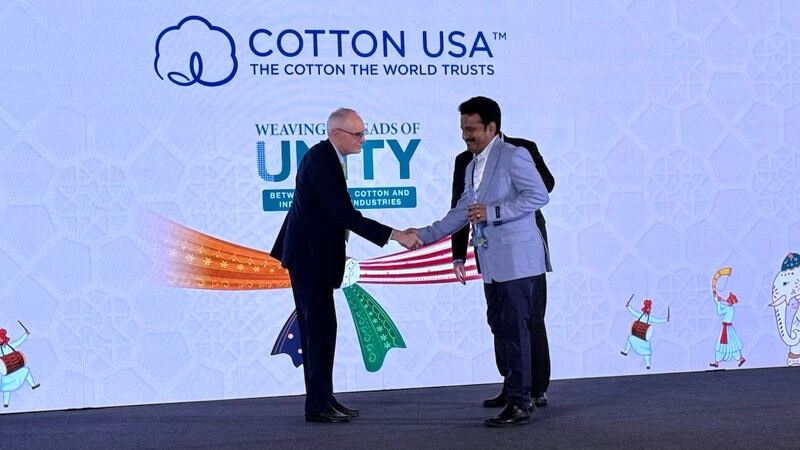তৈরি পোশাকশিল্পে শ্রমিকের সংখ্যা আসলে কত
দেশের পণ্য রপ্তানি আয়ের শীর্ষ খাত তৈরি পোশাকশিল্পে কত শ্রমিক কাজ করেন, সেই পরিসংখ্যান নিয়ে বরাবরই একধরনের ধোঁয়াশা রয়েছে। এ সপ্তাহে জাতীয় সংসদে শ্রম প্রতিমন্ত্রী এই শিল্পে কর্মরত শ্রমিকদের যে সংখ্যা উল্লেখ করেছেন, তা নিয়ে প্রশ্ন উঠেছে। এই শিল্পের সঙ্গে জড়িত ব্যক্তি ও গবেষকেরা মন্ত্রীর দেওয়া তথ্যের সঙ্গে দ্বিমত পোষণ করছেন।
পোশাকশিল্পের মালিকেরা এক দশক আগে দাবি করতেন যে পোশাক খাতে কাজ করেন ৪০ থেকে ৪২ লাখ শ্রমিক। তবে বর্তমানে পোশাকশ্রমিকের সংখ্যা সচেতনভাবেই এড়িয়ে যান তাঁরা। কারণ, রানা প্লাজা ধসের পর কিছু কারখানা বন্ধ হয়ে যায়। তা ছাড়া কোভিড মহামারির সময় বিপুলসংখ্যক শ্রমিক ছাঁটাইয়ের শিকার হন, যাঁদের অনেকেই আর শেষ পর্যন্ত কাজে ফেরেননি।
শ্রমিকের সংখ্যা নিয়ে ধোঁয়াশার মধ্যেই গত রোববার জাতীয় সংসদে শ্রম ও কর্মসংস্থান প্রতিমন্ত্রী নজরুল ইসলাম চৌধুরী জানান, দেশের তৈরি পোশাক খাতে ৫০ লাখ ১৭ হাজার ৬৫২ জন শ্রমিক আছেন। ক্ষমতাসীন আওয়ামী লীগের সংসদ সদস্য নুরুন্নবী চৌধুরীর এক প্রশ্নের জবাবে শ্রম প্রতিমন্ত্রী সংসদকে এ তথ্য জানান।
অবশ্য রপ্তানিমুখী তৈরি পোশাক খাতে এই–সংখ্যক শ্রমিক নেই বলে জানিয়েছেন পোশাকশিল্পমালিকদের দুই সংগঠন বিজিএমইএ ও বিকেএমইএর নেতারা। তাঁরা বলছেন, পুরোনো কারখানা যেমন বন্ধ হয়, তেমনি নতুন কারখানাও চালু হয়। তবে কারখানা বাড়লেও আধুনিক যন্ত্রপাতি ব্যবহারের কারণে শ্রমিকের সংখ্যা খুব বেশি বাড়ছে না।
জাতীয় সংসদে প্রতিমন্ত্রী জানান, রপ্তানিমুখী পোশাক কারখানার মালিকদের সংগঠন বিজিএমইএর তথ্য (বায়োমেট্রিকস ডেটাবেজ) অনুযায়ী, তৈরি পোশাক কারখানায় ৩৩ লাখ ১৭ হাজার ৩৯৭ জন শ্রমিক রয়েছেন। এর মধ্যে ৫২ দশমিক ২৮ শতাংশই নারী শ্রমিক। সংখ্যার হিসাবে নারী শ্রমিক রয়েছেন ১৭ লাখ ৩৪ হাজার ৪৫৯ জন। অন্যদিকে নিট পোশাকশিল্পমালিকদের সংগঠন বিকেএমইএর তথ্য অনুযায়ী নিট খাতে ১৭ লাখ ২৫৫ জন শ্রমিক রয়েছেন। যার ৬২ শতাংশ অর্থাৎ ১০ লাখ ৫৪ হাজার ১৫৭ জনই নারী। সব মিলিয়ে দেশে তৈরি পোশাক খাতে ৫০ লাখ ১৭ হাজার ৬৫২ জন শ্রমিক রয়েছেন।
অবশ্য বাংলাদেশ পরিসংখ্যান ব্যুরোর (বিবিএস) ২০২২ সালের শ্রমশক্তি জরিপ অনুযায়ী তৈরি পোশাক খাতে মোট লোকবল ৪৩ লাখ ১৬ হাজার জন বলে জানান শ্রম ও কর্মসংস্থান প্রতিমন্ত্রী।
কারখানা বাড়লেও শ্রমিকের সংখ্যা খুব বেশি বাড়ছে না। আগে একটি সেলাই মেশিনে দুজন শ্রমিক কাজ করতেন। তবে অটোমেশনের কারণে বর্তমানে একটি মেশিনে একজন কাজ করেন।
এস এম মান্নান, সভাপতি, বিজিএমইএ
জানতে চাইলে বিকেএমইএর নির্বাহী সভাপতি মোহাম্মদ হাতেম প্রথম আলোকে বলেন, ‘আমাদের তথ্যভান্ডারে একসময় ১৭ লাখ শ্রমিকের কথা উল্লেখ থাকলেও এখন বাস্তবে ১৩ লাখের বেশি শ্রমিক নেই। দীর্ঘদিন ধরে কারখানাগুলো ৬০ থেকে ৭০ শতাংশ সক্ষমতায় উৎপাদন চালাচ্ছে। তার মানে, উৎপাদন কমার সঙ্গে সঙ্গে শ্রমিকও কমেছে। প্রতি মাসে কিছু শ্রমিক চাকরি ছাড়েন। সেসব জায়গায় নতুন নিয়োগও বন্ধ।’ অপর এক প্রশ্নের জবাবে তিনি বলেন, রপ্তানিমুখী তৈরি পোশাক খাতে কত শ্রমিক কাজ করেন, তার প্রকৃত হিসাব জানতে উদ্যোগ দরকার।
খোঁজ নিয়ে জানা যায়, বিজিএমইএ ও বিকেএমইএর অনেক সদস্য প্রতিষ্ঠান একই সঙ্গে দুইটি বাণিজ্য সংগঠনের সদস্য। সেসব প্রতিষ্ঠানের শ্রমিকদের তথ্য-উপাত্ত উভয় বাণিজ্য সংগঠনের তথ্যভান্ডারে রয়েছে। দ্বৈত গণনার কারণে পোশাক খাতে প্রকৃত শ্রমিকসংখ্যা বের করা কঠিন। তা ছাড়া বিজিএমইএ ও বিকেএমইএর সদস্য নয়, এমন প্রতিষ্ঠানও তৈরি পোশাক রপ্তানি করছে।
জানতে চাইলে বিজিএমইএর সভাপতি এস এম মান্নান প্রথম আলোকে বলেন, রপ্তানিমুখী তৈরি পোশাক খাতে শ্রমিকসংখ্যা ৪০ লাখের বেশি হওয়ার সুযোগ নেই। তথ্যভান্ডার ও ইনস্যুরেন্সের তথ্য অনুযায়ী বিজিএমইএর সদস্য কারখানাগুলোয় ৩২ লাখ শ্রমিক আছেন। অপর এক প্রশ্নের জবাবে তিনি বলেন, ‘কারখানা বাড়লেও শ্রমিকের সংখ্যা খুব বেশি বাড়ছে না। আগে একটি সেলাই মেশিনে দুজন শ্রমিক কাজ করতেন। তবে অটোমেশনের কারণে বর্তমানে একটি মেশিনে একজন কাজ করেন। যদিও আমাদের রপ্তানি বেড়েছে।’
রপ্তানিমুখী পোশাক কারখানাগুলোকে ডিজিটাল ম্যাপ বা মানচিত্রের আওতায় নিয়ে এসেছে ব্র্যাক বিশ্ববিদ্যালয়ের সেন্টার ফর এন্ট্রাপ্রেনিউরশিপ ডেভেলপমেন্ট (সিইডি)। ম্যাপড ইন বাংলাদেশ (এমআইবি) নামের এই প্রকল্প ব্র্যাকের তত্ত্বাবধানে পরিচালিত হলেও তাতে কৌশলগত অংশীদার হিসেবে রয়েছে বিজিএমইএ ও বিকেএমইএ।
এমআইবির তথ্য অনুযায়ী, ৩ হাজার ৬৭৮ পোশাক কারখানায় ২৮ লাখ ৯১ হাজার শ্রমিক কাজ করেন। এর মধ্যে ৪২ দশমিক ৯ শতাংশ পুরুষ ও ৫৭ দশমিক ১ শতাংশ নারী। কারখানাগুলোর মধ্যে ১ হাজার ৭৭৯টি বিজিএমইএ এবং ৫৪৩টি বিকেএমইএর সদস্য। বিজিএমইএ ও বিকেএমইএ উভয় সংগঠনের সদস্য কারখানা আছে ২৭৮টি। এই দুই সংগঠনের কোনোটিরই সদস্য নয় এমন কারখানা আছে ১ হাজার ৭৮টি।
এমআইবি প্রকল্পের এক কর্মকর্তা জানান, নিয়মিত তথ্য হালনাগাদ করে কারখানাগুলো। তা ছাড়া দুই বছর পরপর পরিদর্শন করে তথ্য সংগ্রহ করা হয়। বর্তমানে পরিদর্শনের কাজটি হচ্ছে।
আমরা মনে করি, তথ্য-উপাত্ত দেওয়ার ক্ষেত্রে মন্ত্রীর আরও সতর্ক থাকা দরকার। অন্যদিকে যাঁরা তথ্য সরবরাহ করেছেন, তাঁদেরও সতর্ক থাকা প্রয়োজন। গ্রহণযোগ্য তথ্য দেওয়া হলে বিভ্রান্তি এড়ানো যেত
খন্দকার গোলাম মোয়াজ্জেম, গবেষণা পরিচালক, সিপিডি
জানতে চাইলে বেসরকারি গবেষণা প্রতিষ্ঠান সেন্টার ফর পলিসি ডায়ালগের (সিপিডি) গবেষণা পরিচালক খন্দকার গোলাম মোয়াজ্জেম প্রথম আলোকে বলেন, জাতীয় সংসদে সদস্যদের বিভিন্ন খাতভিত্তিক তথ্য-উপাত্ত জানতে চাওয়ার আগ্রহ ইতিবাচক। সংশ্লিষ্ট মন্ত্রীর তথ্য দেওয়ার বিষয়টিও ইতিবাচক। তবে তথ্য দেওয়ার ক্ষেত্রে যাচাই-বাছাই করাটা খুবই দরকার। রোববার শ্রম প্রতিমন্ত্রী তৈরি পোশাকশিল্পের শ্রমিকসংখ্যার যে তথ্য দিয়েছেন, তা বাস্তবসম্মত কি না, সেটি নিয়ে প্রশ্ন রয়েছে।
খন্দকার গোলাম মোয়াজ্জেম বলেন, শ্রম প্রতিমন্ত্রী বিজিএমইএ ও বিকেএমইএর দেওয়া তথ্য উল্লেখ করেছেন। একই সঙ্গে তিনি সরকারি সংস্থা বিবিএসের তথ্যও দিয়েছেন। উভয় তথ্যের মধ্যে একধরনের বিভ্রান্তি রয়েছে। অন্যদিকে কোন উৎসের ভিত্তিতে বিজিএমইএ ও বিকেএমইএ এ তথ্য দিয়েছে, সেটি বোধগম্য নয়। এই দুটি বাণিজ্য সংগঠন ম্যাপড ইন বাংলাদেশের সদস্য। তাদের তথ্য অনুযায়ী বর্তমানে ৩ হাজার ৬৭৮ কারখানায় ২৮ লাখ ৯১ হাজার পোশাকশ্রমিক আছেন। বিবিএসের হিসাবে রপ্তানি শিল্পের পাশাপাশি অভ্যন্তরীণ বাজারে কর্মরত শ্রমিকসংখ্যা উল্লেখ করা হয়েছে।
সিপিডির এই গবেষক বলেন, ‘আমরা মনে করি, তথ্য-উপাত্ত দেওয়ার ক্ষেত্রে মন্ত্রীর আরও সতর্ক থাকা দরকার। অন্যদিকে যাঁরা তথ্য সরবরাহ করেছেন, তাঁদেরও সতর্ক থাকা প্রয়োজন। গ্রহণযোগ্য তথ্য দেওয়া হলে বিভ্রান্তি এড়ানো যেত।’




















